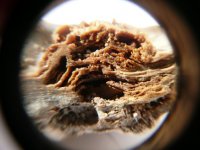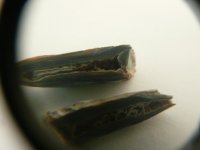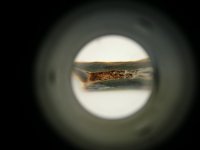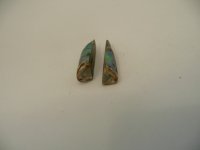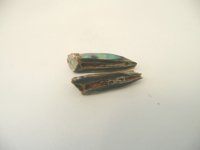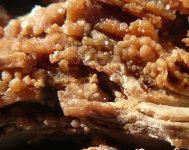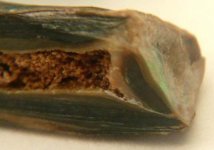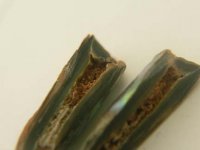New Zealand Natural Pearl
New Member
Conical Formation
Conical Formation
Hi
Firstly replying to Gem Geek - Yes the abalone has been turned
upside to show you how they lye underneath.
You will note green gonad is female - white is male as in this photos
Steve - Membrane/mantle is the same - not the shell.
The inside of the conical is actually the starting point
of the pearl. If you like we will cut one in half and show
what happens.
Tango - Your photo - What is the size of the shell?
Where was it farmed?
what specimen of abalone and age?
It is possible to culture conical pearls in Farmed Abalone
Conical Formation
Hi
Firstly replying to Gem Geek - Yes the abalone has been turned
upside to show you how they lye underneath.
You will note green gonad is female - white is male as in this photos
Steve - Membrane/mantle is the same - not the shell.
The inside of the conical is actually the starting point
of the pearl. If you like we will cut one in half and show
what happens.
Tango - Your photo - What is the size of the shell?
Where was it farmed?
what specimen of abalone and age?
It is possible to culture conical pearls in Farmed Abalone
Last edited:

